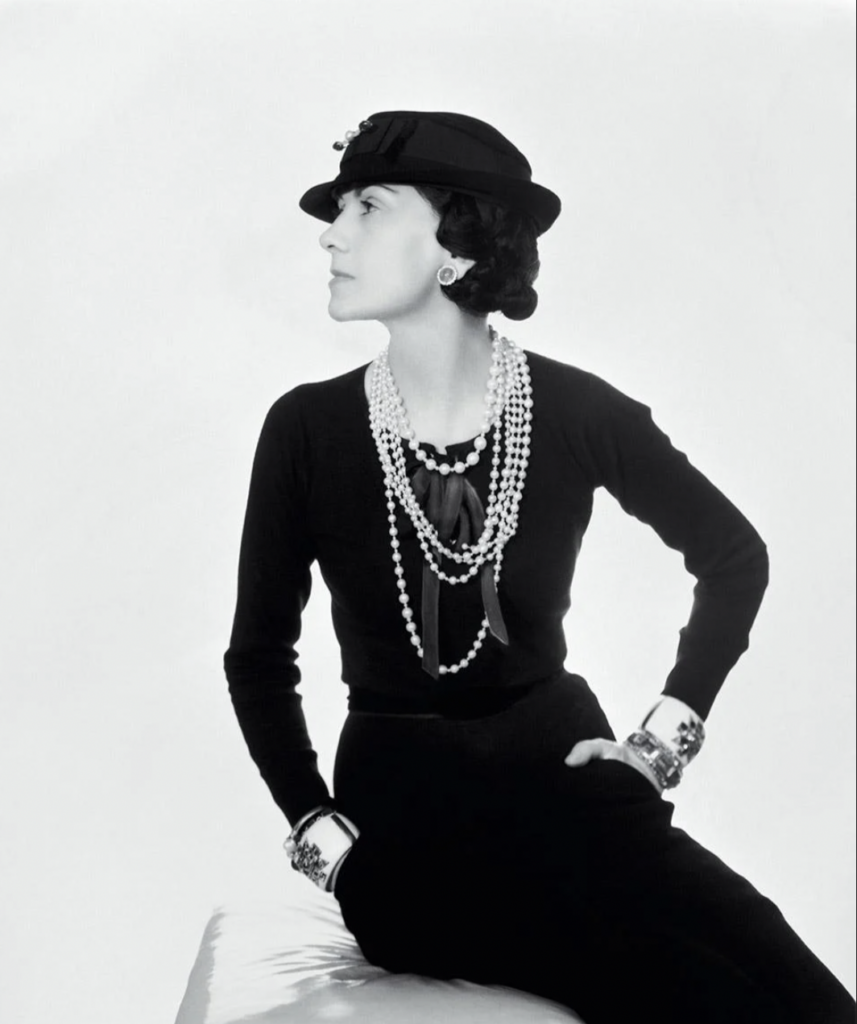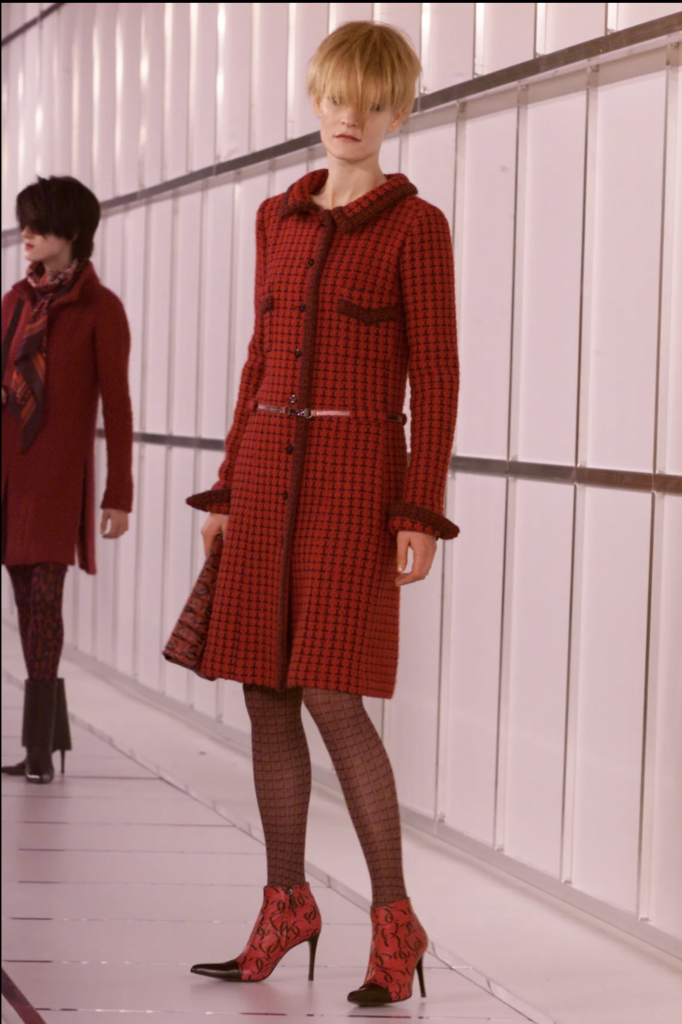Chanel’s iconic tweed is more than just a fabric—it is a symbol of timeless sophistication, innovation, and the brand’s unparalleled craftsmanship. Tweed has been woven into the history of the House of Chanel, transforming from a rugged material associated with countryside attire to a hallmark of high fashion.
Origins of Tweed and Gabrielle Chanel’s Vision
Tweed originated in Scotland as a durable, handwoven wool fabric designed for outdoor activities. Its dense, water-resistant texture made it a staple for country sportswear. However, it was Gabrielle “Coco” Chanel who first saw tweed’s potential to transcend its utilitarian roots and become a staple of luxury fashion.
In the 1920s, Chanel was inspired by menswear and the practical elegance of British fashion. During her time in Scotland with the Duke of Westminster, she became captivated by tweed, appreciating its versatility and rich textures. Chanel began incorporating tweed into her designs, adapting it to suit her vision of women’s fashion—comfortable yet elegant, structured yet free.

A Timeline of Chanel’s Tweed
1920s: The Introduction
- Chanel introduced tweed to women’s fashion, challenging the conventional norms of the time. She used the fabric for her tailored suits, which were revolutionary for their emphasis on comfort and ease of movement, diverging from the restrictive corsets and gowns of the Edwardian era.
1930s: Establishing the Tweed Suit
- Chanel’s tweed suits gained popularity, especially among modern women seeking practical elegance. These designs featured boxy jackets and straight skirts, offering both style and functionality.
1954: Reinvention Post-War
- After reopening her fashion house in 1954, Chanel reintroduced tweed as a cornerstone of her collections. The classic Chanel suit, comprising a fitted tweed jacket and skirt, became a global sensation. The jacket was distinct for its clean lines, lack of darts, and intricate braid trims.
1960s: Popularity with Icons
- Tweed was embraced by cultural icons like Jacqueline Kennedy, Grace Kelly, and Audrey Hepburn, cementing Chanel’s suits as a symbol of sophistication. The 1961 film Breakfast at Tiffany’s showcased tweed’s cultural impact.
1980s: Karl Lagerfeld’s Evolution
- When Karl Lagerfeld took the helm as creative director in 1983, he reimagined Chanel’s tweed. Lagerfeld modernized the fabric by experimenting with bold colors, unconventional patterns, and new silhouettes. He combined traditional craftsmanship with innovative techniques, making tweed an ever-evolving element of Chanel’s identity.
2000s-Present: Tweed in Contemporary Fashion
- Today, under Virginie Viard’s direction, Chanel continues to celebrate tweed, blending tradition with modernity. It remains a highlight of Chanel’s seasonal collections, appearing in jackets, dresses, bags, and even shoes. The material is now interpreted in contemporary styles, such as oversized coats and deconstructed designs.



How Chanel Tweed Is Made
Creating Chanel tweed is a meticulous process involving artistry and innovation. Chanel sources its tweed from specialist mills, such as the Maison Lesage and Linton Tweeds in the UK, known for their exceptional craftsmanship.
Key Features of Chanel Tweed:
- Blend of Materials: Chanel tweed often combines wool with silk, cotton, and synthetic fibers, creating unique textures and finishes. Metallic threads, sequins, or ribbons are sometimes woven into the fabric for added dimension.
- Weaving Techniques: Traditional looms are used to achieve complex weaves, resulting in intricate patterns like houndstooth, plaid, or boucle.
- Custom Colors: Each season, Chanel develops exclusive color palettes for its tweeds, ensuring that the fabric aligns with the creative vision of the collection.
- Hand Finishing: Details such as the signature braid trim are crafted and applied by hand, ensuring each piece is a work of art.
The Meaning of Tweed in Chanel Today
In the 21st century, tweed remains synonymous with Chanel’s legacy, embodying the brand’s commitment to quality, innovation, and timeless style. It represents:
- Empowerment: The tweed suit was a liberating alternative to the restrictive attire of the early 20th century, symbolizing women’s growing independence.
- Versatility: Tweed adapts to every season and context, from elegant eveningwear to casual street style.
- Sustainability: Chanel’s investment in preserving traditional craftsmanship ensures that tweed continues to be made with care and respect for artisanal techniques.
Chanel’s tweed is not just a fabric; it is a canvas for creativity and a testament to the brand’s enduring influence in fashion. From Coco Chanel’s revolutionary vision to Karl Lagerfeld’s bold reinterpretations and Virginie Viard’s contemporary twists, tweed has remained a cornerstone of the House. It continues to inspire, adapt, and redefine luxury fashion, ensuring its place in the annals of style history for generations to come.